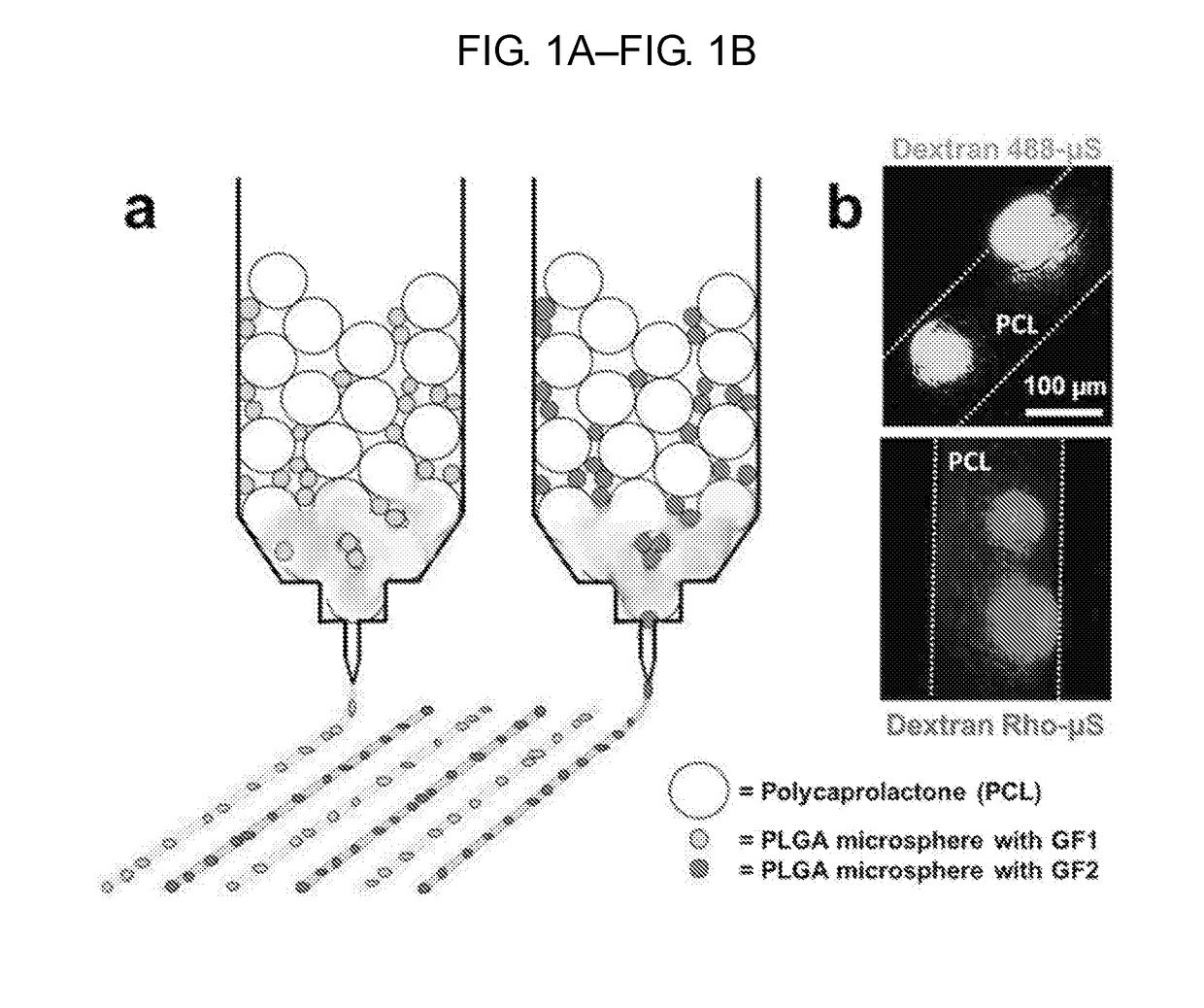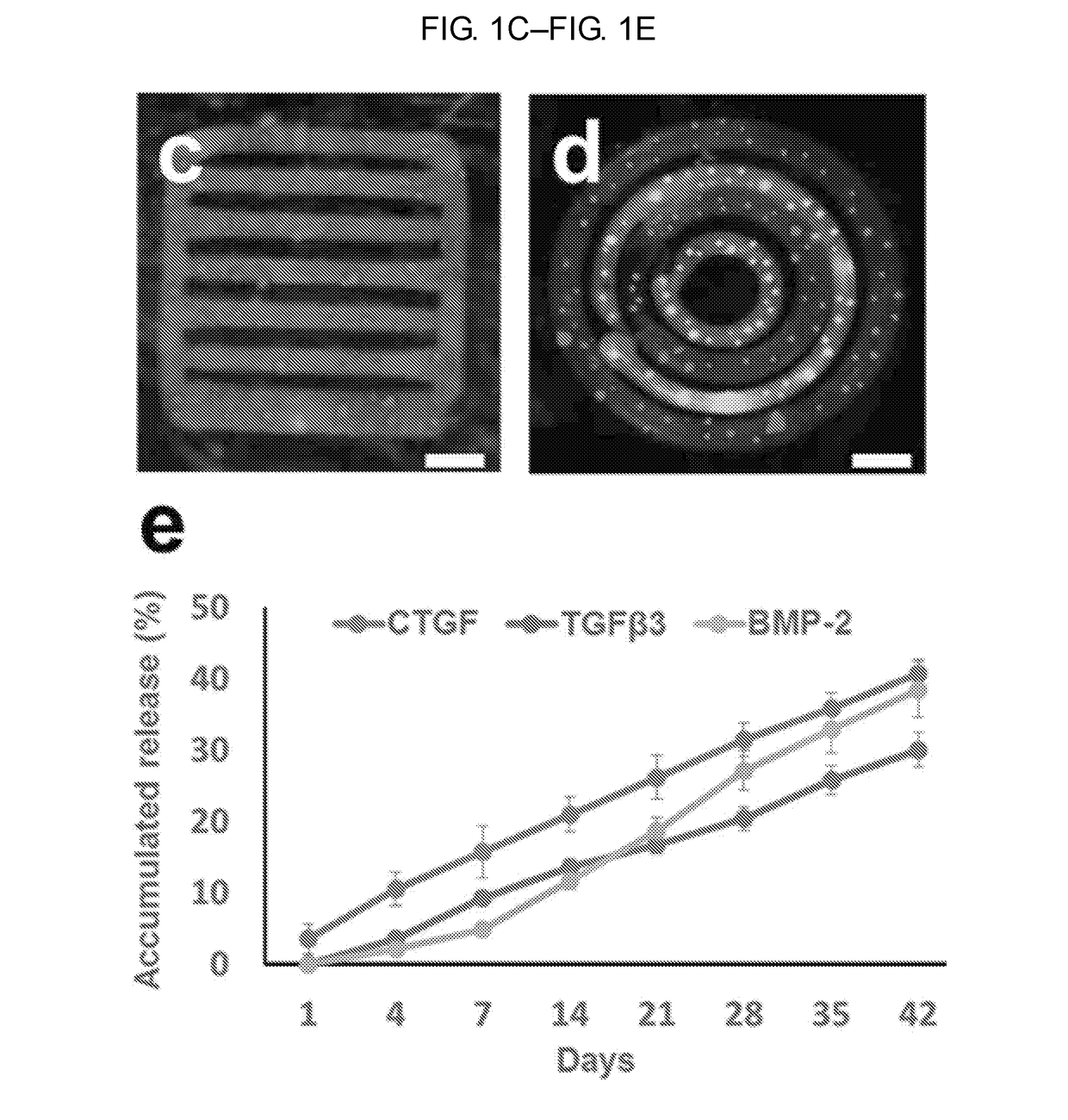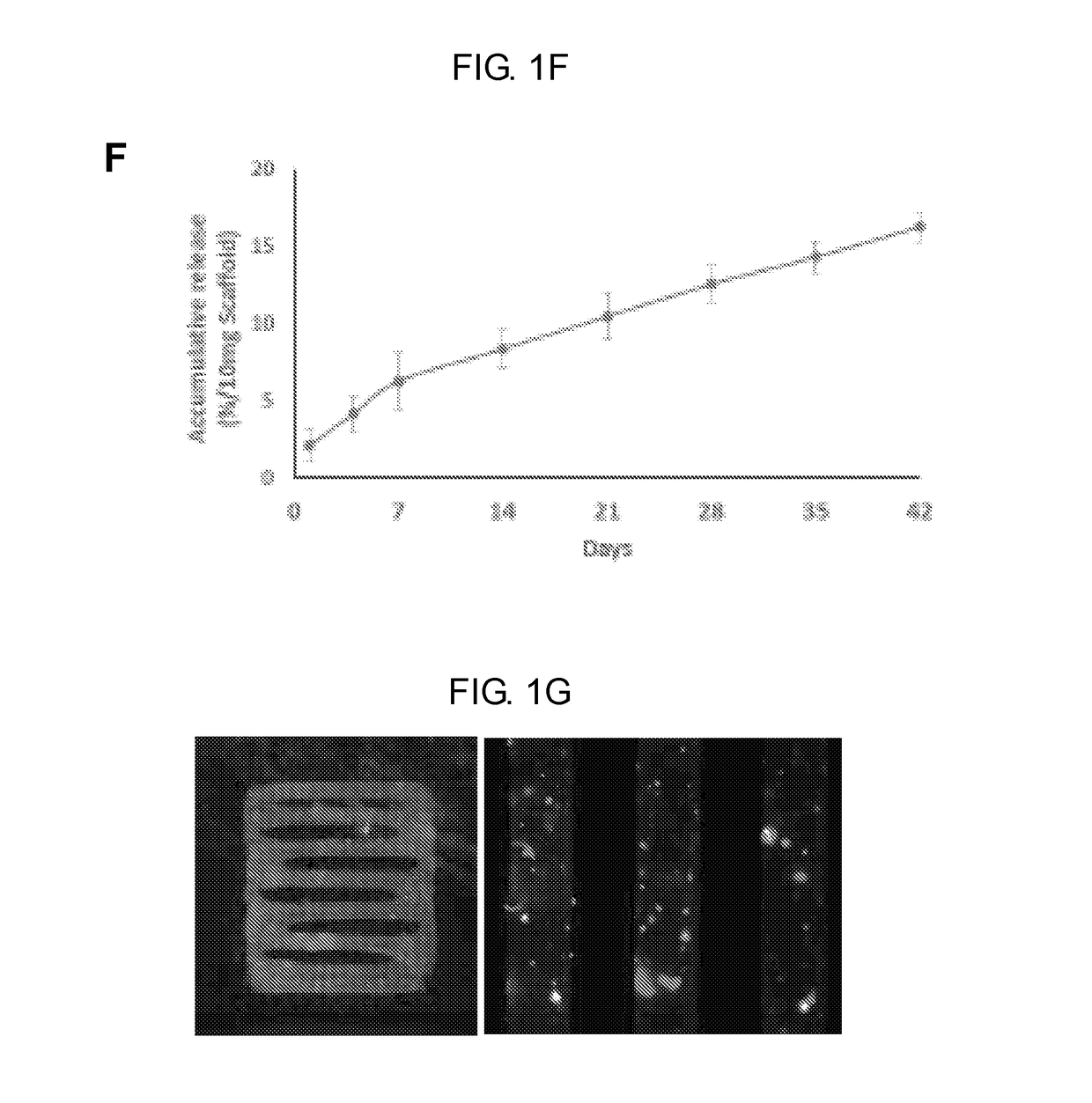Spatiotemporal delivery system embedded in 3d-printing
- Summary
- Abstract
- Description
- Claims
- Application Information
AI Technical Summary
Benefits of technology
Problems solved by technology
Method used
Image
Examples
example 1
3D Printed Biocompatible Scaffold for Multi-Tissue Interface
[0271]The following example provides for a 3D printed biocompatible scaffold with spatiotemporal delivery of microsphere encapsulated CTGF and TGFβ3.
[0272]Selected growth factors (GF) were encapsulated in poly(lactic-co-glycolic acids) (PLGA) microspheres (μS) for controlled release. Poly(lactic-co-glycolic acid) (PLGA) microspheres (10-400 μm) encapsulating CTGF, TGFβ3, and BMP growth factors, were prepared by double-emulsion technique.
[0273]Then 3D scaffolds with custom-designed microstructure and outer shape were constructed using layer-by-layer deposition of continuous PCL microfibers. PCL pellets and growth factor-encapsulated microspheres were mixed in dispensing cartilages of 3D Bioplotter® (EnvisionTec, Germany) and heated up to 100° C., selected from heating diffusion analysis (see e.g., FIG. 1A). Material was dispensed through a fine stainless steel needle (inner diameter 50 μm to 400 μm), creating micro-sized gro...
example 2
Growth Factor Delivery in 3D Printed Multi-Tissue Interface Scaffold
[0281]The following Example demonstrates formation of multi-tissue interfaces in 3D-printed scaffold with spatiotemporal delivered CTGF and TGFβ3. Methods are according to Example 1 except as indicated otherwise.
[0282]A single layered rectangular structure was constructed (see e.g., FIG. 3A) with alternative PCL microfibers-embedding CTGF-μS and TGFβ3-μS (see e.g., FIG. 3B). The size of microfibers and interfibers space was 100 μm.
[0283]Then human bone marrow derived mesenchymal stem / progenitor cells (MSCs) were delivered in the scaffold's inter-fiber space via fibrin gel. After 4 weeks culture in vitro, alternative depositions of COL-I+ and COL-II+ matrices, corresponding to the pattern of growth factor delivery, forming an integrated interface within the 100-200 μm interfiber zones (see e.g., FIG. 3C).
[0284]This demonstrated PCL scaffolds with spatiotemporal delivery of CTGF and TGFβ3 successfully formed native-li...
example 3
Spatiotemporal Delivery of Growth Factors Embedded in 3D Printed Multi-Tissue Scaffolds
[0285]The following example will test the efficacy of the spatiotemporal delivery of growth factors (GFs) embedded in 3D printed scaffolds (see e.g., Example 1) for regeneration of multi-tissue complexes.
[0286]Scaffolds are first cultured with multiple stem / progenitor cell populations in vitro (see e.g., Example 5, Example 6, and Example 7), followed by in vivo implantation in a relevant animal model (see e.g., Example 5).
[0287]Scaffolds are designed with spatiotemporal delivery of growth factors. An anterior cruciate ligament-fibrocartilage-bone interfaces (see e.g., FIG. 4A) and supraspinatus tendon-fibrocartilage (unmineralized and mineralized)-bone interfaces (see e.g., FIG. 4B) are reconstructed in 3D-printed scaffolds with spatiotemporally delivered growth factors.
[0288]In a similar way, a cementum (CM)-periodontal ligament (PDL)-alveolar bone (AB) complex is reconstructed (e.g., periodontiu...
PUM
| Property | Measurement | Unit |
|---|---|---|
| Temperature | aaaaa | aaaaa |
| Temperature | aaaaa | aaaaa |
| Length | aaaaa | aaaaa |
Abstract
Description
Claims
Application Information
 Login to View More
Login to View More - R&D
- Intellectual Property
- Life Sciences
- Materials
- Tech Scout
- Unparalleled Data Quality
- Higher Quality Content
- 60% Fewer Hallucinations
Browse by: Latest US Patents, China's latest patents, Technical Efficacy Thesaurus, Application Domain, Technology Topic, Popular Technical Reports.
© 2025 PatSnap. All rights reserved.Legal|Privacy policy|Modern Slavery Act Transparency Statement|Sitemap|About US| Contact US: help@patsnap.com



